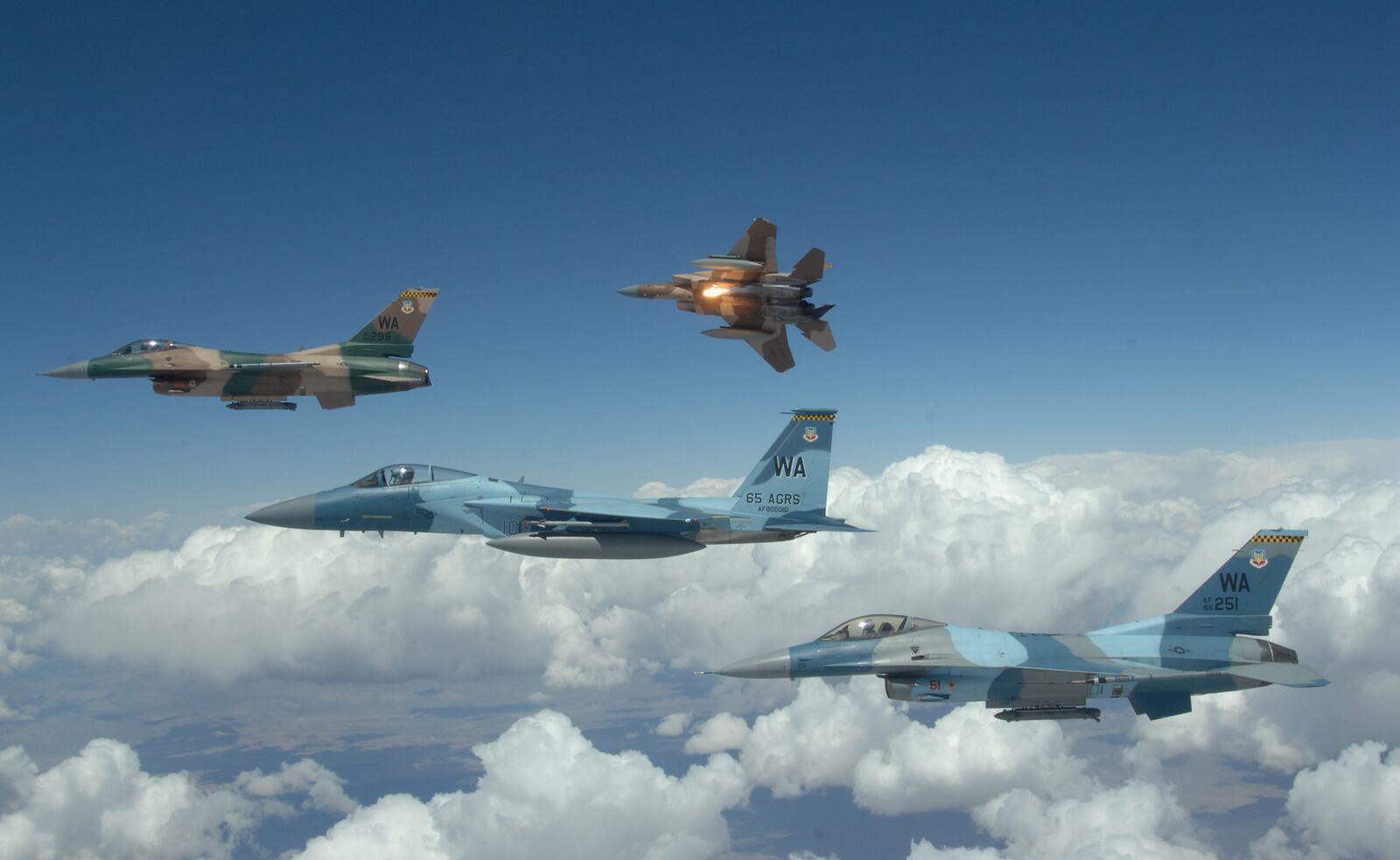With the Air Force’s shift toward preparing for a potential fight against a “great power” nation such as Russia or China, Air Combat Command will have to continue making adjustments.
Among the biggest will be overhauling how its pilots and other airmen train, said Gen. Mike Holmes, the ACC commander, in an Aug. 28 interview.
In January 2017, ACC leaders reconsidered how the command measures the potential threats it could face, and whether its airmen are ready. For two decades, ACC — like much of the rest of the military — has focused on foes such as the Islamic State and Taliban. Now, the command has expanded its “threat matrix process” to take into account the threats that North Korea, Iran, Russia or China present.
ACC uses that information to tailor its training toward defeating those kinds of threats.
“We’ve changed the amount that we’re training. We’re trying to train more, and we’re trying to train better against those particular threats,” Holmes said.
“What do we need to fund in flying hours, or the equivalent of that for our ground units, to help them train more? What do we need to fund in sustainment of their weapon systems? And what specific tools do we need to make that training more effective?”
As part of its focus on “training more, and then training better,” Holmes said ACC has hired more contractors to serve as adversary pilots during training at Nellis Air Force Base in Nevada. As a result, ACC pilots at Nellis will be able to spend more time practicing the skills they need in combat, and less time pretending to be opposing forces, he said. The command hopes to expand that next year.

ACC is also trying to improve its ground emitters to simulate threats such as surface-to-air missiles during training. Holmes said the command has already acquired and begun testing advanced emitters to support F-35 training, and it plans to expand them further beginning in fiscal 2019.
But the command also needs to continue rebuilding its manning levels in key jobs, Holmes said. ACC has made “great strides” in plugging the alarming shortfall of maintenance airmen, he said. It is continuing to develop those new maintainers, many of whom have a skill level of 3, to turn them into more experienced 5- and 7-level maintainers so they can do more advanced and unsupervised work.
Holmes as other manning concerns, particularly tactical air control party airmen, special missions aviators — who serve as gunners and engineers on ACC’s rescue helicopters — and air battle managers who fly on AWACS and JSTARS command and control and intelligence, surveillance and reconnaissance planes.
A combination of retention problems, production shortfalls and the lingering effects of the Air Force’s 2014 drawdown led to the shortfalls, Holmes said. But the high operational tempos they continually work under has also strained those airmen.
RELATED

Since there aren’t enough airmen in those fields to begin with, it’s hard to peel away experienced airmen from their stretched-thin units so they can serve as instructors and train new airmen, Holmes said.
ACC is working with Air Education and Training Command to provide enough airmen to serve as instructors, Holmes said, and is trying to increase production in its own training units as well.
Meanwhile, the Air Force continues to struggle with the longstanding pilot shortfall that has worried leaders across the force. The Air Force expects to see an increase in new pilots finishing undergraduate pilot training, as well as an increase in pilot production within flying training units, Holmes said.
The Air Force will continue to roll out initiatives to encourage pilot retention and “get at the irritants people cite as reasons they might want to leave,” he said. The command will also work on protecting airmen’s time at home, so when they’re not deployed, they can spend time with family and focus on the training requirements they need.
“It’s too early for me to say that we’ve turned the corner, but we’ve worked hard to get the tools in place,” Holmes said. “I’m not sure this is something that will ever be over. It comes and goes, but it’s something we have to work at all the time. I want our pilots and air crew members to know that we’re committed to continuing to work it.”
Stephen Losey is the air warfare reporter for Defense News. He previously covered leadership and personnel issues at Air Force Times, and the Pentagon, special operations and air warfare at Military.com. He has traveled to the Middle East to cover U.S. Air Force operations.




